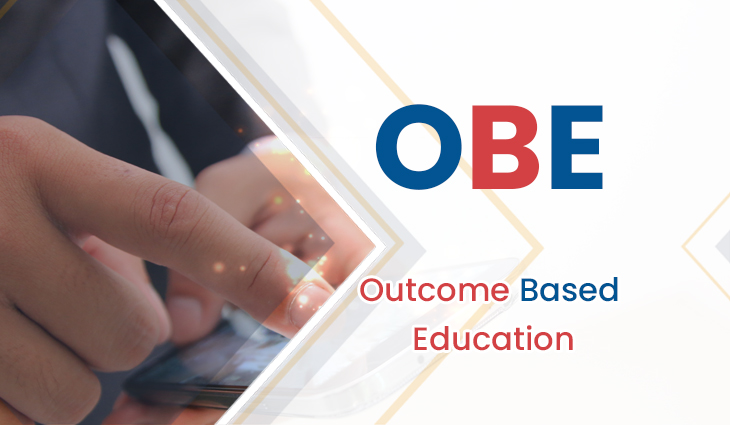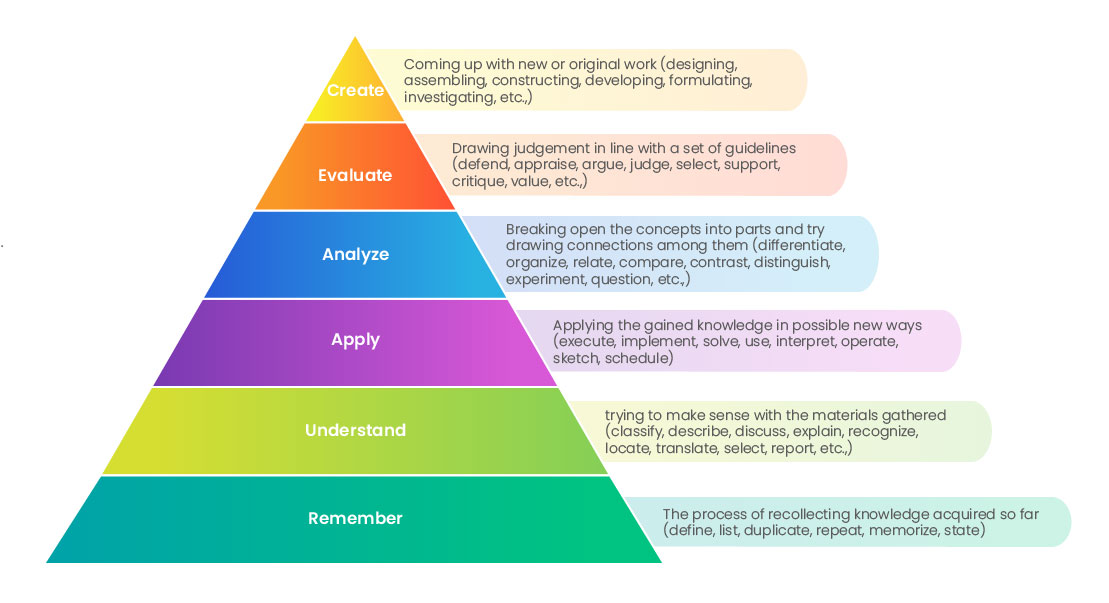Outcome Based Education - what is it all about?

Even William Spady, the self-proclaimed father of Outcome-Based Learning (OBE) when he first initiated OBE, he wouldn’t have thought that his brainchild would come this long way in the field of Education. This blog aims in pondering what is Outcome Based Education and what constitutes it on a larger scale. It also tries to find, how it fits into today’s educational system and the advent of automated OBE.
A sociologist who innovated Outcome Based Education, Spady (1994) ruled out spelling out the objectives for this student-centered approach. Rather he outlined the following ground principles for his Outcome-Based Approach which is worth perusing.
- Student-centered - It is an approach by which the learner’s mastery over a particular skill is demonstrated and measured.
- The clarity in focus - A learning outcome has to be made obvious to the learner even at the outset of learning. This outcomes-based model works on bringing out the specific outcomes from the learners.
- Design down, deliver up - It means the curriculum has to be designed with a clear definition, outlining the expected outcomes. This will pave the way to achieve expanded opportunities in the student’s performance.
- Exceeding expectations - All students can deliver the highest level of performance. The only kickstart needed is to make them believe and encourage them, the only way to attain high expectations.
- Expanded opportunities - It means giving countless chances and ways to show the students that they have met their objectives. Not all learners learn the same thing, the same way, and at the same time. However, extended opportunities can help achieve high standards. They help students to learn what is most needed for the time and hour.
Outcome-Based Education - in a Crux
In short, outcome-based education (OBE) formulates content around activities that leads to specific outcomes. It directly leads to increasing the proficiency of a particular skill, knowledge, or behavior of the student. In Spady’s (1994) words, Outcome Based Education is
“An OBE curriculum means starting with a clear picture of what is important for students to be able to do, then organizing the curriculum, instruction, and assessment to make sure this learning ultimately happens”.
The need of the hour - A sudden blow-up at the right moment
Outcome-Based Education exactly made its way when there was a ruckus going on about decentralization within educational institutions. The time when long hours were spent in class, no. of years spent in schooling, courses opted, and dollars spent with no steady academic outcomes were questioned. It is quite shocking to read the National Employability Report 2016 by Aspiring Minds. It reveals the sad state of affairs regarding the employability of Indian graduates. Only 3.67 percent of graduates were found employable in IT product companies and 18 percent in the non-IT services companies.
This dwindling figure clearly indicates that the entire scope of education should be expanded where skills are expanded beyond inputs. In spite of gaining educational experience, the pool population lacked the necessary skills to adapt themselves to the changing times and employability. Thus Outcome Based Education blended in perfectly with this new school of thought and aimed at improving students.
“Errors are no surprise” - Manual OBE - an analysis
Outcome-Based Education without a speck of doubt is a rival to the conservative idea of Teaching and Learning. It is a competency-based education that got blown up, keeping criticisms at bay. This growth was only with the help of progressive educators who got a good grip on it. Today OBE is a firestorm with great clarity of focus. It has been embedded into learning to match up with the country’s curriculum standards. Institutions are adopting and implementing OBE on a massive scale. But here too lies a catch! Managing it manually leaves one to face the following challenges.
- Data Pooling and Curriculum Management seemed a humongous task!
- It analyzed data on a single platform.
- Assessments, activities, quizzes, and tests, all in one place proved to be difficult to track.
- Manual calculations of attainment often lead to error.
- This leads to mistakes in the system and misjudging outcomes through the course or curricula.
- Outcome mapping with attainment analysis, a crucial domain of OBE consumed a huge amount of effort.
- Inadequacy when it comes to the mapping between CO and PO
It is here the need for an automated Outcome Based Education crept in. The same education, but not manual anymore, rather automated. One of our earlier blogs on technology-based education programs is worth peeking in at this point in time. Right from Recruitment through Course Evaluation, and Outcome-Based Education to Faculty Management systems, everything is done without flaw.
How are Learning Outcomes set in OBE?
The success-producing hub, the OBE-built classroom has a clear set of learning outcomes. It’s not all about assigning a textbook, homework, quizzes, and an assortment of tests for every student. Rather it is something over it. It is definitely a tedious process when done manually. An efficient OBE’s Learning outcome should have a set of threshold values and mapping questions to calculate the attainment of the outcomes. They should encourage students to support by providing a detailed analysis of the performance and programs for improvement. The necessary action to improve the grades is all that a good Outcome Based Education should possess.
Mapping Learning Outcomes - here is a tip.
OBE is, without doubt, a wide keyword mapped to all industries for higher education. It evaluates the performance of students based on their qualities, skills, and knowledge as their outcomes. A correct LMS system should integrate well with the outcomes, giving room for improvement and quality. After all, education’s outcome is to be mapped.
Mapping Learning Outcomes is nothing but aligning course-level outcomes with program outcomes. A faculty can explore the student's program-level outcomes at the course level using this mapping. Mapping such course outcomes can get tedious for both staff and management, alike. Remember, a proficient Outcome Based Education maps at 5 different levels by aligning itself to Bloom’s Taxonomy’s cognitive, affective, and psychomotor domains. This 5-level of mapping offers a level of control that is unprecedented. It completely changes the way a staff looks at workflows and tasks related to Outcome-Based Education.

How to assess better using Outcome-Based Education?
Outcome-Based Education breaks the stereotypes of paper and pen tests. Rather, they assess students’ performance, knowledge, and skills in many other ways. Quiz, solving puzzles, giving an online presentation, modeling something, and taking up a multiple-choice assessment, are some of the few. Assessments are criterion-focused which the students achieve during the learning period. Students are expected to go with the flow and think out of the box in order to implement outcome-based education. Today’s school systems should set clear-cut rubrics to route the student through success. OBE settles these burning issues that scorch the current Education scenario with super ease :
- Students were not assessed uniformly - The traditional method of teaching waited for the end of the course to assess the students. Similarly, it didn’t assess them uniformly. Rather it is completely vested in the biased nature of the teachers. OBE shunned both these practices by building up a rigid education platform with patterned assessment techniques that made education fun and entertaining.
- Outcomes were not assessed uniformly - OBE matches the 21st-century skills and values every single outcome of the learner.
Why Outcome-Based Education (OBE), of all?
Along with the above, the following pointers sum up the mastery behind outcome-based education.
- Clear-cut criteria for what constitutes mastery
- A thoughtful way of instruction that adapts to specific learner needs
- Complete assistance for learners as and when they face challenges
- Adequate time is given to achieve mastery



